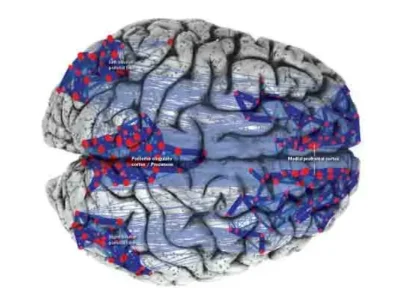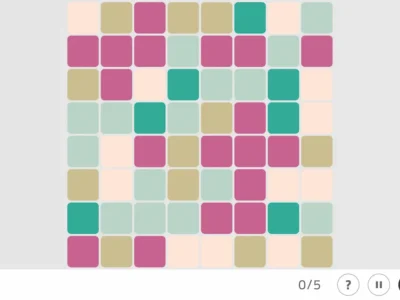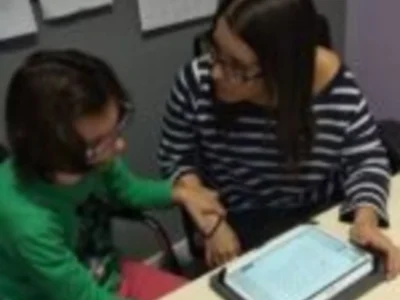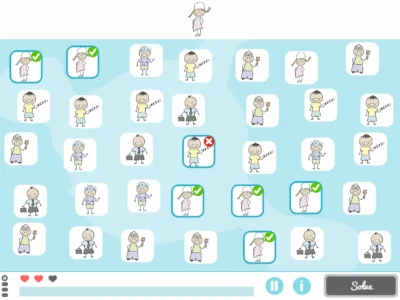Olalla Sáiz Vázquez, occupational therapist and professor at the University of Burgos, presents together with her students Naroa Martínez Bravo, Goretti Manterola Aldazabal and Marina Labat Garrués, a cognitive workshop with NeuronUP for the cognitive stimulation of people with multiple sclerosis (MS).
Case study
María is a 45-year-old woman diagnosed with relapsing-remitting multiple sclerosis 8 years ago, who comes to the clinic due to a progressive worsening of her cognitive functions.
The multiple sclerosis (MS) is an autoimmune and neurodegenerative disease that affects the central nervous system, damaging the myelin that surrounds nerve fibers and causing interruptions in the transmission of nerve impulses.
The relapsing-remitting type is the most common form and is characterized by the appearance of relapses or episodes of neurological symptoms that can last days or weeks, followed by periods of partial or complete remission. The affected functions vary depending on the lesions, but may include motor disturbances (weakness, spasticity), sensory disturbances (tingling, pain), visual disturbances (blurred vision, optic neuritis) and balance issues. At the cognitive level, the disease can impact memory, processing speed, attention and planning ability, which can affect academic performance, work and daily life.
María’s main problems include severe short-term memory difficulties, which prevent her from retaining recent information and learning new concepts. This significantly affects her work performance as a teacher and her daily activities. In addition, she presents both spatial and temporal disorientation, confusing dates and familiar places, along with agnosias that make it difficult to recognize common objects, and anomias that prevent her from finding specific words in everyday language.
In the neuropsychological examination, a significant impairment in immediate memory, a marked difficulty naming objects and places, and alterations in visual recognition were evidenced. These cognitive problems are consistent with the impact of multiple sclerosis on brain areas related to attention, memory and language.
This picture suggests that the characteristic lesions of the disease have begun to significantly affect María’s cognitive abilities, highlighting the importance of initiating therapeutic interventions that include cognitive rehabilitation and compensatory strategies to improve her quality of life.
An cognitive intervention is proposed using the NeuronUP platform, a tool designed for cognitive rehabilitation and stimulation. This platform will allow personalized work on the affected areas, such as short-term memory, language and orientation spatial and temporal.
Through interactive activities that can be adjusted according to María’s needs, the aim will be to strengthen her residual cognitive abilities and develop compensatory strategies that improve her performance in daily activities. The intervention will be supervised by a team of therapists, who will periodically evaluate progress and adjust the tasks to maximize benefits.

Subscribe
to our
Newsletter
Multiple sclerosis (MS) intervention from occupational therapy
Objectives of the multiple sclerosis (MS) intervention
General objective of the multiple sclerosis (MS) intervention
The main objective to achieve with the intervention is to maintain preserved cognitive functions.
General objective of the multiple sclerosis (MS) intervention
Specific objectives of the multiple sclerosis (MS) intervention
To achieve this main objective, other specific objectives are proposed:
- Maintain working memory.
- Reduce anomia.
- Preserve spatial and temporal orientation.
Plan for the multiple sclerosis (MS) intervention
The proposed intervention has a duration of 45 minutes, during which activities will be carried out aimed at working on short-term memory, anomia, place orientation and time orientation for 20, 10, 15 and 10 minutes respectively.
The activities to carry out with María are:
- Memorize the order
- Find a word by its definition
- Household Objects
- Location in Time
Memorize the order, for the treatment of short-term memory
To maintain short-term memory, the activity called Memorize the order will be used.
This activity aims to sequence the different images in the order previously shown
above. For this, it first gives 120 seconds to view and memorize how
the images are arranged. Afterwards, the user must place them in the correct way. If they
succeed, the level will be increased.
The level increases according to the number of images to memorize. In the first photo there are 2 images,
while in the advanced phase there are 10 images.
Memorize the order has 5 difficulty levels, from basic to advanced. These will be
graded depending on the needs of the participants. In our case, since they have a
moderate impairment, they will start at the easy level, and as they pass the tests they will increase in level.
Conclusion
NeuronUP is a platform that facilitates cognitive stimulation interventions both in group and individual formats. This tool is designed to help professionals plan and guide their interventions, focusing on the specific objectives of each session.
One of its main advantages is the possibility of customizing activities according to each person’s tastes and interests, which helps make the tasks more meaningful. In addition, it offers a wide variety of exercises aimed at working different cognitive functions, allowing the selection of the most motivating activities for each user.
Another notable aspect of NeuronUP is that it allows detailed monitoring of patients’ progress, which helps evaluate the effectiveness of the intervention. Finally, a particularly useful feature is that patients can continue performing activities from home, promoting continuity of treatment.
If you liked this blog post about a cognitive workshop with NeuronUP for the intervention of multiple sclerosis (MS), you will likely be interested in these NeuronUP articles:
“This article has been translated. Link to the original article in Spanish:”
Taller cognitivo con NeuronUP para la intervención de esclerosis múltiple (EM)








Leave a Reply